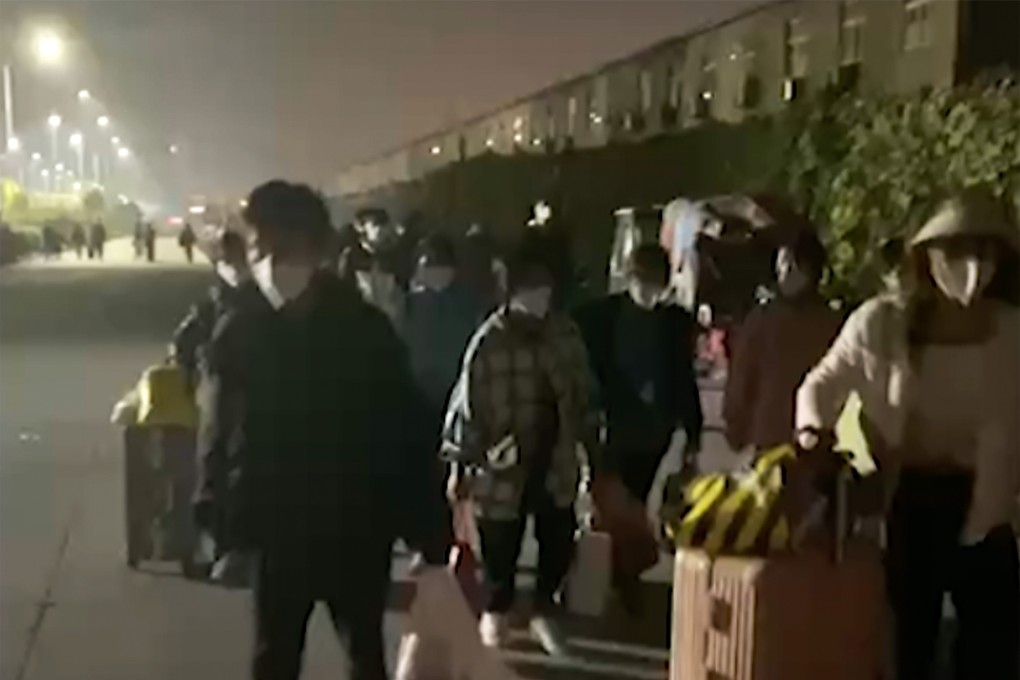Opinion | Foxconn factory disruption shows there are no winners from excessive Covid-19 controls
- Foxconn confirmed last week that a small number of its employees were affected by Covid-19 but said production was largely continuing as normal
- The exodus of workers from Foxconn is a warning about the accumulating social and human costs of implementing a zero-tolerance Covid policy

The short answer is that many workers within the Foxconn compound were scared of catching Covid-19 – and unhappy with the actions of management within the compound, which is a city in itself with nearly 300,000 workers.
Workers started to vent their anger by posting texts, videos and pictures on Chinese social media platforms. Some complained about poor food quality and the lack of medical care, and many voiced concerns about catching the virus.
Foxconn confirmed last week that a small number of its employees were affected by Covid-19 but said production was largely continuing as normal. The local government of Zhengzhou, and the provincial authority of Henan, published data showing small numbers of infections but did not report any cases within Foxconn compound.
The situation within the compound did not improve. According to screenshots of internal notices, the “reward” for workers who showed up at work was doubled from 50 yuan to 100 yuan (US$14) per day from October 26 to November 11. But workers did not buy that. Video clips showing them fleeing the compound emerged on Saturday and went viral in the following hours. On Sunday, the Zhengzhou government and Foxconn pledged to help workers.
Workers fleeing over Covid fears is not new. In early 2020, millions of Indian migrant workers walked from cities to village homes when the Indian government announced lockdowns, and in Vietnam, over a million of migrant workers fled major cities in the summer of 2021 for the same reason. The exodus of workers from Foxconn shares certain similarities with the other cases, but it is also a warning about the accumulating social and human costs of implementing a zero-tolerance Covid policy.
